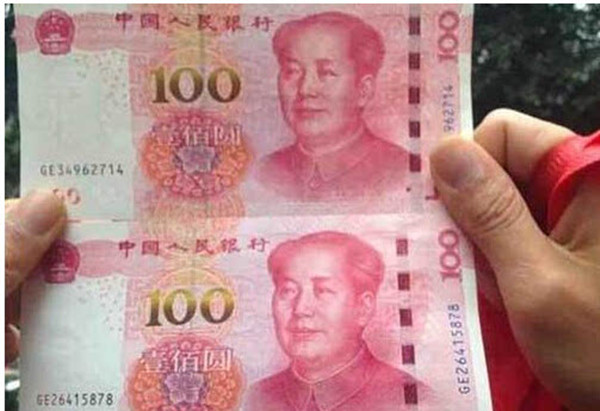Just in case you’ve been away from China, live under a rock and depend on others for all your expenses, or transitioned to being a cashless digital payments connoisseur, China released and put into circulation new harder to counterfeit 100-yuan notes in late 2015. According to officials in charge of the rollout, the main priority in introducing these new notes is counterfeit prevention. Let’s learn about the differences between this and the old 100-yuan note.

At first glance, these notes don’t look too different. After all, they’re both the same pinkish-red hue we’ve all become familiar to, as well as the portrait of PRC founder Mao Zedong on one side and Beijing’s Great Hall of the People on the other. However, several new security measures are quite noticeable, starting with the main “100” yuan in the center of the note being printed in gold instead of the previous red and blue. In addition, color-changing ink has been implemented so that the gold “100” will change between gold and green when looked at in different angles. The security strip has been upgraded, enlarged to make it easier for machines to read. The security strip will also change in color between pink and green depending on the viewing angle. On the back of the note where the Great Hall of the People image is located, there will be a textured pattern across of it.
The last iteration of 100-yuan note was released in 2005. From time to time, there have been accounts that ATM machines would even dispense counterfeit notes. The new notes are said to make it easier for ATMs to read them and identify fake ones. It may not be prevalent, but let’s hope the new notes will put an end into that from happening.
Next time you withdraw money from an ATM, pay attention to the notes you receive. Will you have the new 100-yuan note? Let’s hope you do!



